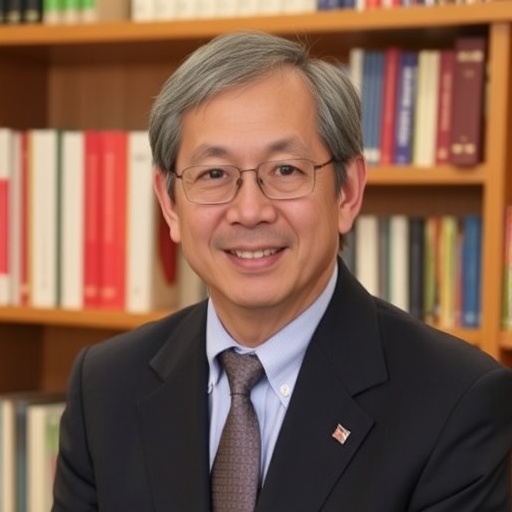In a landmark recognition that underscores the frontriers of optical physics and condensed matter science, Rice University’s distinguished physicist, Junichiro Kono, has been awarded the 2026 Frank Isakson Prize for Optical Effects in Solids by the American Physical Society. This prestigious biennial accolade honors revolutionary contributions in optical research that have propelled transformative breakthroughs in solid-state physics. Kono’s trailblazing work delves deeply into the interactions between light and matter at the nanoscale, unlocking novel quantum phenomena and establishing foundational principles for the next wave of photonic technologies.
Kono’s research agenda focuses on how photons engage with artificially engineered quantum structures and carbon-based nanomaterials, harnessing ultra-precise spectroscopic techniques to reveal interactions previously thought impossible. One of the hallmark achievements includes the first experimental observation of superfluorescence originating in a solid medium—a process where a large ensemble of excited atoms emit light cooperatively, enhancing intensity and coherence dramatically. This discovery alone reshaped understanding about collective light emission mechanisms in condensed matter systems and opened avenues for developing potent ultrafast light sources.
Furthermore, Kono’s group made seminal contributions to understanding quantum behaviors in carbon nanotubes subjected to intense magnetic fields. These cylindrical carbon nanostructures, celebrated for their exceptional electrical and optical properties, revealed subtle quantum effects under magnetic influences that dramatically alter their electronic states. Such insights pave the way for manipulating quantum states in low-dimensional matter, vital for components in quantum computing and spintronics.
Central to Kono’s portfolio is the exploration of ultrastrong coupling between light and matter within terahertz-frequency cavities—a domain encompassed by cavity quantum electrodynamics (QED). This field investigates how confining electromagnetic fields in nanoscale resonators can profoundly modify a material’s intrinsic properties, effectively enabling vacuum electromagnetic fluctuations to influence matter without any external photon injection. This radical paradigm promises revolutionary control over material behaviors, including tuning superconductivity or magnetism via engineered photonic environments.
The significance of Kono’s achievements lies not only in the fundamental physics but also the application prospects. His insights hold promise for innovative technologies ranging from ultra-efficient electronics to advanced quantum communication networks and sensors operating at the zenith of physical precision. The interplay of light and nanoscale materials that Kono’s research elucidates is a keystone for emerging devices capable of harnessing quantum coherence and entanglement in practical ways.
Beyond the flourishing research, Kono exemplifies academic leadership as the Karl F. Hasselmann Chair in Engineering at Rice University. His appointments span electrical and computer engineering, physics and astronomy, and materials science and nanoengineering, illustrating the deeply interdisciplinary nature of his work. He also steers the Smalley-Curl Institute, fostering a collaborative hub for cutting-edge research at Rice.
Highlighting Kono’s commitment to nurturing the next generation of scientists, he has spearheaded international educational programs such as NanoJapan and TOMODACHI STEM@Rice. These initiatives provide invaluable cross-cultural research experiences for students from the U.S. and Japan, catalyzing global scientific collaboration at a critical time when interdisciplinary and international approaches are imperative.
The Frank Isakson Prize itself memorializes physicist Frank Isakson and is traditionally conferred in even-numbered years to honor transformative research in optical effects within solids. Kono’s receipt of this prize reflects not only his seminal individual contributions but the collective intellectual momentum of his research team and collaborators.
Kono’s pioneering optical experiments leverage state-of-the-art techniques capable of probing ultrafast dynamics and interactions invisible to conventional methods. For instance, time-resolved spectroscopy under extreme electromagnetic conditions unveils transient quantum states that hold keys to new materials’ functionalities. This expertise places his team at the forefront of condensed matter physics, blending theory and experiment to unravel complex photonic and electronic phenomena.
The notion of ultrastrong light-matter coupling explored in Kono’s work represents a quantum regime where the interaction strength rivals the system’s resonant frequencies, fundamentally reconfiguring energy levels and quantum states. This regime challenges and extends traditional quantum optics frameworks, demanding sophisticated quantum electrodynamics models and offering unprecedented control over material and photonic systems.
By integrating quantum optics principles with nanomaterial engineering, Kono’s research bridges several domains, including photonics, condensed matter physics, and materials science. This cross-pollination is essential for realizing functional quantum devices that can overcome limitations of classical technologies and herald new applications in computation, secure communication, and sensing with ultra-high sensitivity.
Ultimately, Kono’s recognition by the American Physical Society underscores the transformative power of curiosity-driven research. His reflections emphasize the collaborative spirit in scientific discovery and the boundless potential when talented minds pioneer uncharted physical landscapes. As optical technologies become central to future technological revolutions, Kono’s work marks a guiding beacon illuminating the fusion of light and matter at nature’s smallest scales.
Subject of Research: Optical physics of nanoscale materials, light-matter interactions, and cavity quantum electrodynamics in condensed matter systems.
Article Title: Junichiro Kono Honored with the 2026 APS Frank Isakson Prize for Pioneering Optical Research in Nanoscale Quantum Systems
News Publication Date: November 5, 2025
Web References:
https://news.rice.edu/
Image Credits: Photo by Jorge Vidal/Rice University
Keywords
Physics, Condensed matter physics, Light matter interactions, Cavity quantum electrodynamics, Optics, Optical trapping, Optical properties, Quantum optics, Semiconductors, Materials, Nanomaterials, Materials engineering, Two dimensional materials, Thin films




